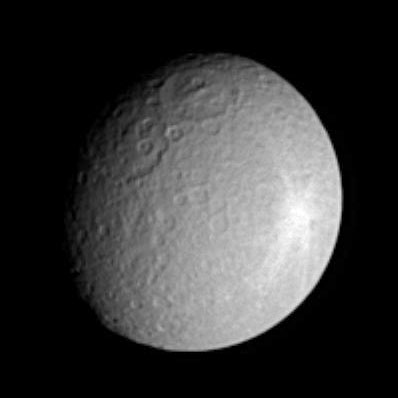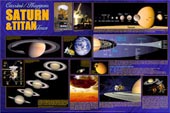
Spaceflight Now +

|

|

|

|

Premium video content for our Spaceflight Now Plus subscribers.

Deep Impact arrives
 NASA's Deep Impact comet spacecraft arrives at the Astrotech Space Operations Facility near Kennedy Space Center to begin final launch preparations for blastoff December 30 aboard a Boeing Delta 2 rocket. (2min 53sec file) NASA's Deep Impact comet spacecraft arrives at the Astrotech Space Operations Facility near Kennedy Space Center to begin final launch preparations for blastoff December 30 aboard a Boeing Delta 2 rocket. (2min 53sec file)
 Play video Play video

Cassini science update
 Radar imagery of Saturn's moon Titan and other new data from the Cassini spacecraft is presented during this JPL news conference on Thursday. (54min 48sec file) Radar imagery of Saturn's moon Titan and other new data from the Cassini spacecraft is presented during this JPL news conference on Thursday. (54min 48sec file)
 Play video Play video

Post-flyby briefing
 Scientists and mission officials discuss the initial pictures and data obtained during Cassini's flyby of Titan during this JPL news conference on Wednesday. (55min 18sec file) Scientists and mission officials discuss the initial pictures and data obtained during Cassini's flyby of Titan during this JPL news conference on Wednesday. (55min 18sec file)
 Play video Play video

First pictures
 The first pictures taken by Cassini during this close encounter with Titan are received at the Jet Propulsion Laboratory to the delight of the mission's imaging leader. (2min 21sec file) The first pictures taken by Cassini during this close encounter with Titan are received at the Jet Propulsion Laboratory to the delight of the mission's imaging leader. (2min 21sec file)
 Play video Play video

Images flood in
 A Cassini mission scientist provides analysis as the raw images taken of Titan's surface flood into the Jet Propulsion Laboratory. (29min 29sec file) A Cassini mission scientist provides analysis as the raw images taken of Titan's surface flood into the Jet Propulsion Laboratory. (29min 29sec file)
 Play video Play video

Flyby explained
 Detailed animation illustrates Cassini's flyby of Titan and how the probe's instruments will study this moon of Saturn. Expert narration is provided by a project official. (3min 09sec file) Detailed animation illustrates Cassini's flyby of Titan and how the probe's instruments will study this moon of Saturn. Expert narration is provided by a project official. (3min 09sec file)
 Play video Play video

 Become a subscriber Become a subscriber
 More video More video

|

|

|

|
|

|

Cassini image shows Saturn moon with a real shiner
CASSINI PHOTO RELEASE
Posted: November 22, 2004
Saturn's moon Rhea shows off the moon equivalent of a black eye -- a bright, rayed crater near its eastern limb.
Rhea is about half the size of Earth's moon. At 1,528 kilometers (949 miles) across, it is the second-largest moon orbiting Saturn.

Credit: NASA/JPL/Space Science Institute
Download larger image version here
|
The image was taken in visible light with the Cassini spacecraft narrow angle camera on Oct. 24, 2004, at a distance of about 1.7 million kilometers (1 million miles) from Rhea and at a Sun-Rhea-spacecraft, or phase, angle of 40 degrees. The image scale is approximately 10 kilometers (6 miles) per pixel. Cassini will image this hemisphere of Rhea again in mid-January 2005, just after the Huygens probe landing on Titan - with approximately 1-kilometer (0.6-mile) resolution.
The Cassini-Huygens mission is a cooperative project of NASA, the European Space Agency and the Italian Space Agency. The Jet Propulsion Laboratory, a division of the California Institute of Technology in Pasadena, manages the Cassini-Huygens mission for NASA's Office of Space Science, Washington, D.C. The Cassini orbiter and its two onboard cameras, were designed, developed and assembled at JPL. The imaging team is based at the Space Science Institute, Boulder, Colo.
|

|

|

|
Cassini poster
 Just in time for the Cassini spacecraft's arrival at Saturn, this new poster celebrates the mission to explore the ringed planet and its moons. Just in time for the Cassini spacecraft's arrival at Saturn, this new poster celebrates the mission to explore the ringed planet and its moons.
 U.S. STORE U.S. STORE
 U.K. & WORLDWIDE STORE U.K. & WORLDWIDE STORE

2005 Calendar
 The 2005 edition of the Universe of the Hubble Space Telescope calendar is available from our U.S. store and will soon be available worldwide. This 12x12-inch calendar features spectacular images from the orbiting observatory. The 2005 edition of the Universe of the Hubble Space Telescope calendar is available from our U.S. store and will soon be available worldwide. This 12x12-inch calendar features spectacular images from the orbiting observatory.
 U.S. STORE U.S. STORE

Moon panorama
 Taken by Apollo 14 commander Alan Shepard, this panoramic poster shows lunar module pilot Edgar Mitchell as a brilliant Sun glare reflects off the lunar module Antares. Taken by Apollo 14 commander Alan Shepard, this panoramic poster shows lunar module pilot Edgar Mitchell as a brilliant Sun glare reflects off the lunar module Antares.
 U.S. STORE U.S. STORE

Mars Rover mission patch
 A mission patch featuring NASA's Mars Exploration Rover is now available from the Astronomy Now Store. A mission patch featuring NASA's Mars Exploration Rover is now available from the Astronomy Now Store.
 U.S. STORE U.S. STORE
 U.K. & WORLDWIDE STORE U.K. & WORLDWIDE STORE

|




 Just in time for the Cassini spacecraft's arrival at Saturn, this new poster celebrates the mission to explore the ringed planet and its moons.
Just in time for the Cassini spacecraft's arrival at Saturn, this new poster celebrates the mission to explore the ringed planet and its moons. The 2005 edition of the Universe of the Hubble Space Telescope calendar is available from our U.S. store and will soon be available worldwide. This 12x12-inch calendar features spectacular images from the orbiting observatory.
The 2005 edition of the Universe of the Hubble Space Telescope calendar is available from our U.S. store and will soon be available worldwide. This 12x12-inch calendar features spectacular images from the orbiting observatory. Taken by Apollo 14 commander Alan Shepard, this panoramic poster shows lunar module pilot Edgar Mitchell as a brilliant Sun glare reflects off the lunar module Antares.
Taken by Apollo 14 commander Alan Shepard, this panoramic poster shows lunar module pilot Edgar Mitchell as a brilliant Sun glare reflects off the lunar module Antares. A mission patch featuring NASA's Mars Exploration Rover is now available from the Astronomy Now Store.
A mission patch featuring NASA's Mars Exploration Rover is now available from the Astronomy Now Store.